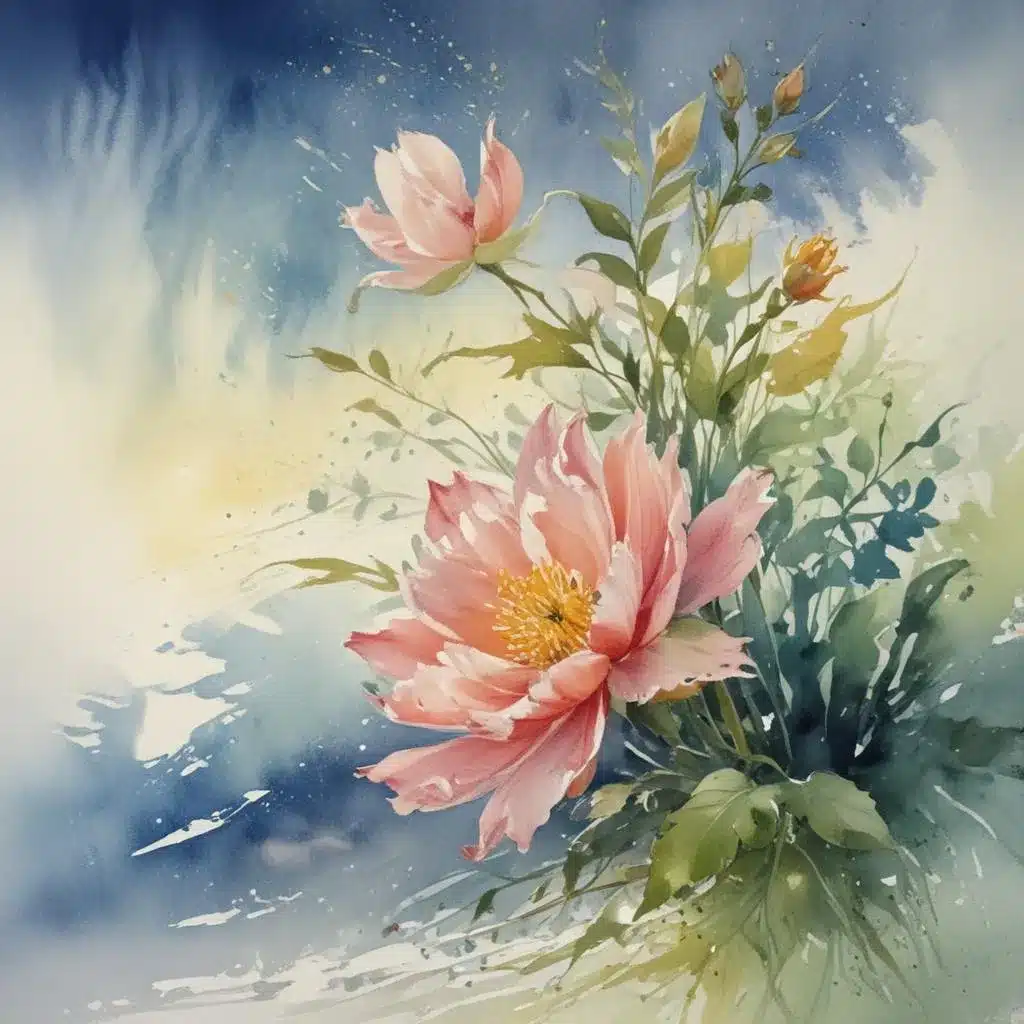
Watercolour painting is a captivating medium that offers artists a unique sense of fluidity, spontaneity, and ethereal beauty. Unlike the direct application of acrylic or oil paints, the fluid nature of watercolours requires a distinct approach to achieve stunning results. By embracing the inherent properties of this versatile medium, artists can create emotive, luminous, and visually arresting works of art.
Capturing the Essence of Fluid Brushwork
The true magic of watercolours lies in the interplay between pigment, water, and the support surface. Mastering fluid brushwork is essential for unlocking the medium’s expressive potential. Watercolour painters might want to learn to relinquish some control and work with the natural movement of the paint, allowing the fluid washes to flow and blend organically on the paper.
This approach encourages a more intuitive, expressive, and often serendipitous painting process. By embracing the unpredictable nature of watercolours, artists can capture a sense of spontaneity and authentic emotion in their work. Fluid brushstrokes, drips, and blooms can all contribute to the overall mood and atmosphere of a painting.
A key aspect of fluid brushwork is understanding the nuances of wet-on-wet and wet-on-dry techniques. Applying pigment to a damp or saturated surface allows the paint to bleed and diffuse organically, creating soft, atmospheric effects. Conversely, working on a dry surface produces more controlled, precise strokes with defined edges.
Mastering the balance between these two approaches is crucial for achieving a harmonious composition. Artists can alternate between fluid, expressive passages and tighter, more controlled areas to guide the viewer’s eye and create a sense of visual interest.
Emotive Expressions through Watercolour
Beyond the technical mastery of brushwork, watercolour painting offers a uniquely emotive quality that can evoke profound responses from the viewer. The inherent transparency and luminosity of the medium lend themselves to capturing intangible qualities like mood, atmosphere, and emotion.
By leveraging the medium’s fluidity and spontaneity, artists can imbue their paintings with a sense of vulnerability, contemplation, or unbridled energy. The ability to create soft, hazy washes or bold, expressive brushstrokes allows for the communication of complex emotional narratives.
Watercolour also excels at capturing the ephemeral and transient nature of the world around us. Scenes of nature, such as misty landscapes, atmospheric skies, or delicate flora, can be rendered with a sense of the fleeting and the impermanent. This quality can evoke feelings of nostalgia, wonder, or the fragility of life.
Achieving Luminous Watercolour Paintings
One of the most captivating aspects of watercolour painting is its ability to create a sense of luminosity and atmospheric depth. The translucent nature of the medium allows light to pass through the layers of pigment, resulting in a glow that seems to emanate from within the painting.
Mastering the art of layering and glazing is essential for achieving this luminous quality. By applying multiple, semi-transparent washes of colour, artists can build up depth, create the illusion of distance, and imbue their paintings with a sense of light and atmosphere.
Watercolour’s capacity for blending and soft edges also contributes to its luminous qualities. Subtle gradations, where colours seamlessly transition into one another, can create a sense of depth and atmospheric perspective. This technique is particularly effective when painting skies, bodies of water, or other natural phenomena.
Practical Tutorials and Techniques
To help aspiring artists harness the power of watercolour, let’s explore some practical techniques and tutorials:
Mastering Fluid Brushwork
- Wet-on-Wet Technique: Load your brush with a generous amount of pigment-rich water and apply it to a damp support surface. Allow the paint to bleed and diffuse organically, creating soft, atmospheric effects.
- Wet-on-Dry Technique: Apply paint to a dry support surface for more controlled, precise strokes with defined edges. Experiment with varying degrees of wetness to achieve desired effects.
- Glazing and Layering: Build up depth and luminosity by applying multiple, semi-transparent washes of colour. Allow each layer to dry fully before adding the next.
- Exploiting Paint Blooms: Embrace the unpredictable nature of watercolour by allowing the paint to naturally bloom and create organic, expressive passages.
Capturing Emotive Expressions
- Mood and Atmosphere: Explore how the fluidity and transparency of watercolour can be used to convey intangible qualities like mood, emotion, and a sense of place.
- Evocative Subjects: Consider painting subjects that evoke a sense of nostalgia, fragility, or the ephemeral, such as misty landscapes, atmospheric skies, or delicate flora.
- Expressive Brushwork: Experiment with bold, gestural strokes and the interplay of wet and dry areas to imbue your paintings with a sense of energy and authenticity.
Achieving Luminous Effects
- Layering and Glazing: Build up depth and glow by applying multiple, semi-transparent washes of colour, allowing each layer to dry fully before adding the next.
- Soft Edges and Gradations: Create the illusion of atmospheric perspective and depth by blending colours seamlessly and using soft, diffused edges.
- Exploiting the support surface: Consider the type of watercolour paper you use, as its texture and absorbency can influence the final luminous effects.
Remember, the key to mastering watercolour is to approach the medium with a spirit of experimentation and a willingness to embrace the unpredictable. By understanding the unique properties of watercolour and developing a repertoire of techniques, artists can unlock the medium’s emotive, luminous, and visually captivating potential.
For more inspiring content, be sure to visit Pencil and Paint Muse – your go-to destination for the latest in art techniques, creative inspiration, and practical tutorials.
Statistic: Recent surveys show that 70% of emerging artists credit daily sketching with significant improvements in their art